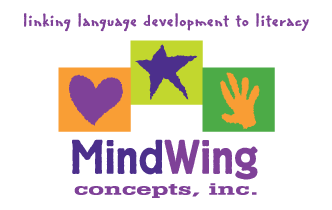Menu
-
- Home
-
About Us
-
The Approach
-
Linking Language & Literacy
-
Professional Learning
-
Learning Resources
-
SHOP
-
Blog
-
- About MindWing
- Our People
- Contact Us
- Your Account
- Login
-
Spain (EUR €)

Tool Tuesday: Summer Study Series, Part 1—Getting Gamey!
June 23, 2025 3 min read
Happy Summer! Each year we set aside these few months on our blog to explore some recent research articles and literature that have relevance to MIndWing’s tools and narrative and expository language supports.
 This month we check out the first of a two-part article discussing game-based learning (GBL), a popular approach for engagement in classrooms. The article can be found at Getting Serious About Games: Exploring How Game-Based Learning Is Used in Education and Therapy. The piece has many points that relate to how games can be used as a language and learning context, an intersection we have also explored in our blog here in the past.
This month we check out the first of a two-part article discussing game-based learning (GBL), a popular approach for engagement in classrooms. The article can be found at Getting Serious About Games: Exploring How Game-Based Learning Is Used in Education and Therapy. The piece has many points that relate to how games can be used as a language and learning context, an intersection we have also explored in our blog here in the past.
Some key points of the article are as follows:
- SLPs have a long history of using games to contextualize targets and motivate students. With game-like activities more frequently being used in the classroom, this provides an opportunity for teachers and SLPs to collaborate to design activities that meet the needs of our students.
- Specific to and broadening the definition of games, the article emphasizes that games “include both physical and digital games, inclusive of various design components. Gamification is the process of taking a learning experience and overlaying it with game features such as reward systems or plotlines.”
- This plotline piece is what grabs my attention with this article, as any context with a narrative or plot can be a great place to include Story Grammar Marker® in the process for building student’s awareness of narrative structure, assist in comprehending the narrative, and scaffold problem solving and decision making where options are offered in the game (pretty much required for it to be called a game).
-
 Relevant suggestions for building a Game-Based Learning (GBL) experience for individuals with autism spectrum disorder included using a narrative to contextualize learning, non-linear plots with decision points, and games with an age-appropriate plot that naturally integrates target skills.
Relevant suggestions for building a Game-Based Learning (GBL) experience for individuals with autism spectrum disorder included using a narrative to contextualize learning, non-linear plots with decision points, and games with an age-appropriate plot that naturally integrates target skills. - I’ll again recommend the inexpensive games from Family Pastimes, which designs cooperative games that have simple plots we can map with SGM® and often a social-cognitive focus on “following a group plan,” which is a great extension of SGM®’s Plan icon.
- Aspects emphasized from data gathering of teacher and SLP perspectives included criteria for choosing or designing games: “high-interest low-complexity design features, current and appealing visuals or graphics, and short time frames for play,” and clear specificity toward learning goals, which could entail curriculum vocabulary/concepts or linguistic targets such as forming a complete and complex sentence to state a player “move” or choice in the game.
The article provides great food for thought.
Some specific resources I recommend that are relevant to infusing games in sessions, or more broadly in the classroom, include the following:
- Create a choose-your-own adventure story that serves as a “game.” ChatGPT does a great job of creating these for you, and over at Ditch that Textbook, they have a guide to helpful prompts you can use with AI, as well as a Google Slides template to make your story visual and interactive.
-


 Consider simplified role-playing games (RPGs) such as Hero Kids, or the very open-ended options, Movie Night or The Event (all very inexpensive). RPGs are great for getting students to use language to create characters, settings, and generate narratives about problems and solutions!
Consider simplified role-playing games (RPGs) such as Hero Kids, or the very open-ended options, Movie Night or The Event (all very inexpensive). RPGs are great for getting students to use language to create characters, settings, and generate narratives about problems and solutions! -
 Al
Al so take a look at the Escape Room genre: I love the lightly story-based resources at Virtual Escape Rooms and also those at Hooda Escape, and you can always infuse more context with related picture books!
so take a look at the Escape Room genre: I love the lightly story-based resources at Virtual Escape Rooms and also those at Hooda Escape, and you can always infuse more context with related picture books!
Leave a comment.
Comments will be approved before showing up.
